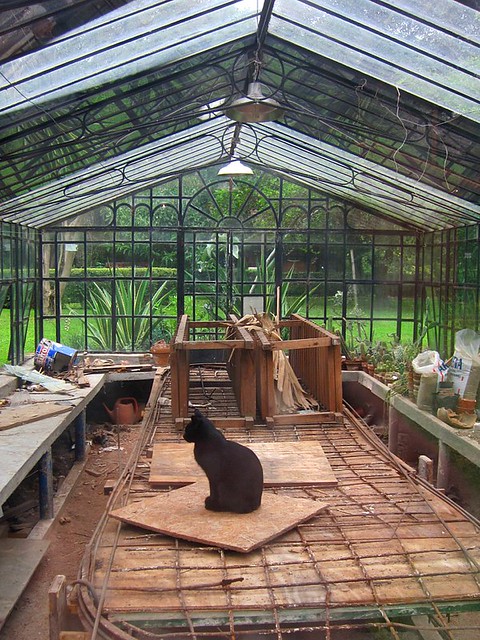After a morning exploring La Recoleta Cemetery, I walked down towards the Rio de la Plata, the estuary that flows past the city. Although Buenos Aires is a city on the water, it very much has its back to it. I didn’t see any paths along the water and apparently projects to build boardwalks have not been terribly successful. However, there are several busy waterside green plazas, including the Plaza de las Naciones Unidas, where the metal flower shown above blooms. The Floralis Genérica was created by Eduardo Catalano in 2002, and it opens every morning and closes at sunset. It’s meant to represent all the flowers in the world.
I wandered through some rather fancy neighborhoods where there were many embassies, and happened upon the Jardín Japonés (Japanese Garden). It was only a few pesos to enter and I was ready to sit down somewhere, so I found a nice bench and watched this egret strutting through the water. Behind it, children were playing on a small island connected across the pond by a red bridge.
There were swarms of eager koi fish begging for food from visitors, and a little tea restaurant where you could feed yourself, if you wanted to make a day of your visit. But I only had a few days in Argentina, so I continued on my way.
Ask I continued, I crossed one of the large Buenos Aires avenidas, or avenues, and saw the Monumento De los Españoles, or the Spanish Monument. The white marble monument was created in 1910 in honor of the centennial of the Revolution of May. However, it was not inaugurated until 1927, as its designer, and his successor, died shortly after each finishing sketches. In 1916, the ship carrying much of the monument’s statuary from Barcelona wrecked near Brazil, killing 450 people and taking down the heavy sculptures with it.
While walking past the zoo, I saw this charming mural by the street artist Gualicho.
Just past the zoo is the Jardín Botánico, which is a free, somewhat in shambles, botanical garden with a healthy population of domestic cats. Needless to say, I loved it there.
It was started in 1898, and near the old mansion where the founding family used to live is this beautiful Art Nouveau glass greenhouse.
There is a diverse collection of plants in the botanical garden, and if not for the porteños around you, it would be easy to think that you are in Europe rather than South America.
There is a structured French garden, as well as gardens with Asian plants, and even a Roman garden that includes the species of trees that grew at the first century botanist Pliny the Younger’s villa.
There was also a garden of Yerba Mate, the basis for the strong, tea-like drink obsessively consumed by Argentinians. Everywhere I saw people drinking mate through metal straws in gourd cups, their thermoses of hot water beside them. I hear it is a bit of an acquired taste, and I actually didn’t try it as it isn’t really served in cafes. You have to make it yourself or get someone to share.
There is an astounding number of cats living in the botanical garden. Everywhere they are reclining in the sun, watching you from trees and greenhouse roofs, ambling around fountains, or joining you on a bench. I read that they are not actually feral cats, but are mostly domestic cats that have been abandoned by their owners.
I wandered around the old greenhouses, peering in windows and meeting cats, and then walked further into the Palermo neighborhood to meet my friend Cecilia and her brother Jacob for lunch. They were spending the month in Argentina, and we had empanadas before heading out to see the stores in the shopping area.
After wandering through the busy streets and fancy designer shops, we stopped for coffee and I got this cappuccino, that turned out to be more decadent than expected. It came with three chocolates, with the height of them corresponding to how tall your drink was.
More wandering ensued, and after much walking I got a cab back to the apartment and slept better than I had in months. That was true for this entire trip. So nice to relax after this long edgy winter.













